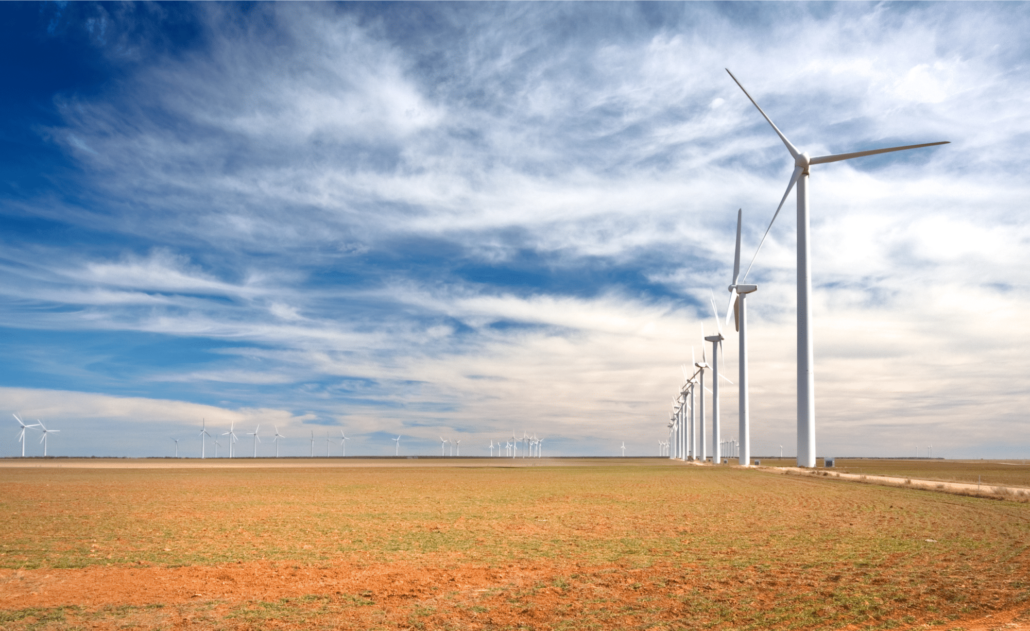Texas Renewable Energy FAQs
Learn more about renewables in Texas and why it’s a great time to switch to green electricity.
How Can I use Renewable Energy at Home?
Solar power is the most viable option for most homes. Solar panels can adapt to almost any roof that is not covered by shadows, and their service life is over 25 years if you use a high-quality solar brand.
A wind turbine can be an option for properties with a constant wind that is not blocked by terrain, vegetation or other buildings. For example, wind power may work in beaches and hilltops. Also, a small hydroelectric generator may be viable in a property with a creek or river flowing through.
Alternatively, you can get an electricity plan that uses 100% clean energy.
Does Renewable Energy Increase Electricity Rates in Texas?
No. This is a common argument, since homes and businesses use more renewable energy in places with expensive electricity. However, high kilowatt-hour prices are what drives renewable energy usage, and not vice versa.
In most cases, expensive electricity has two main causes:
- A power network with high costs in terms of infrastructure, operation and maintenance.
- Relying on expensive generation systems to meet peaks in electricity demand.
What Are the Renewable Energy Resources in Texas?
The main renewable energy sources in Texas are wind power, solar power, biomass, and hydropower. Texas also has abundant geothermal resources, according to the US Energy Information Administration, but they have not been developed.
Some organizations also count nuclear energy among the renewable sources, but this is a widely debated topic.
What Percentage of Texas Energy is Renewable?
Texas obtained 21.5% of its electricity from renewable sources in 2019, according to the latest data from ERCOT.
Texas Electricity Facts Labels (EFLs) display an average renewable energy content of 20.7% for Texas.
How Much Renewable Energy Does Texas Produce?
The following table summarizes electricity generation for the main renewable sources in Texas according to ERCOT:
| Renewable Energy Source | Generation | Percentage (%) |
| Wind power | 76,708 million kWh | 20.0% |
| Solar power | 4,398 million kWh | 1.15% |
| Biomass | 421 million kWh | 0.11% |
| Hydroelectricity | 956 million kWh | 0.25% |
| Total renewable generation | 82,482 million kWh | 21.5% |
*Considering all forms of generation used in Texas, renewable and nonrenewable, the total electricity production for 2019 was 383,447 million kWh.
How Much Renewable Energy Does Texas Use?
Among the 48 contiguous states, Texas is the only one with a stand-alone electricity grid, which means that all electricity generation is consumed locally. In other words, renewable energy usage is equal to production: 82,482 million kWh in 2019, equivalent to the annual consumption of over 5.8 million Texan homes.
Are There Any Health Benefits to Using Renewables?
Air pollution has been linked with cardiac and respiratory conditions, among other health issues. Green energy sources can improve air quality by reducing emissions, which contributes to human health. According to a Harvard study, a higher concentration of particulate matter in the air is linked with an increased COVID-19 mortality.
Are There Economic Benefits of Using Renewable Energy?
Solar and wind power are now among the cheapest electricity sources in the world. In many regions, these technologies have achieved lower generation costs than coal.
Hydropower can also achieve low costs with adequate site conditions, and it can respond fast to sudden increases in energy consumption.
Biomass power is useful for organizations with access to large amounts of organic waste, since they can use it to reduce electricity costs.
Renewable energy also creates new jobs. For example, the Texas wind power industry provides employment for over 25,000 persons. When renewable energy achieves low costs in a region, it also creates jobs indirectly by attracting corporations.
In rural areas of Texas, wind and solar farms have become a source of income for farmers who rent their land. Also, renewable energy is a source of tax income for municipalities. Renewable energy does not have the volatility of the fossil fuel industry, or the seasonal nature of agriculture.

Texas is a prime state for sprawling wind farms
What are Some Advantages of Using Renewable Energy?
Renewable energy does not run out: The main advantage of renewable sources is that they replenish themselves faster than the consumption rate. For example, you could cover all roofs in Texas with solar panels, and that would not affect the amount of sunshine available tomorrow.
Renewable energy reduces greenhouse gas emissions: With the exception of biomass, which is based on combustion, renewable sources produce much less emissions than fossil fuels. There is an initial environmental impact when mining and processing materials for generation equipment, and then during delivery and construction. However, there are zero GHG emissions while producing electricity.
Does Renewable Energy Have Any Disadvantages?
Renewable energy sources offer low generation costs and environmental benefits. However, they have limitations like any other technology.
Solar panels and wind turbines depend on resources that cannot be controlled – sunlight and wind. To achieve a reliable power supply, they must be combined with other types of generation.
Hydroelectric turbines can be combined with a water reservoir to create a controllable power source, which means they don’t have the limitation of solar panels and wind turbines. However, hydroelectric power plants require very specific site conditions, which are not common in Texas.
Biomass power is viable when large amounts of organic waste are available, but otherwise it can be expensive.
What Texas Research and Development Institutions Are Working on Renewable Energy?
The following are some of the main organization that have contributed to renewable energy research in Texas:
- Austin Technology Incubator (ATI)
- San Antonio Clean Energy Incubator (SACEI)
- Houston Technology Center (HTC)
- Energy Institute of the University of Texas at Austin
- Pecan Street Inc., an R&D organization associated with UT-Austin
- Smalley Institute for Nanoscale Science and Technology at Rice University
- Advanced Research Initiative for Sustainable Energy (ARISE) at Texas A&M
- Zero Energy Research Laboratory at the University of North Texas
What are Some New Developments in Texas Renewable Energy?
Solar panels, wind turbines and hydroelectric turbines are mature technologies. However, they can achieve synergy with emerging technologies like energy storage and virtual power plants:
- Energy storage eliminates the main limitation of solar panels and wind turbines, which is their dependence on variable energy inputs – sunlight and wind.
- A virtual power plant or VPP uses information technologies to manage smaller energy resources as a single system. For example, a VPP can combine the capacity of 1,000 homes with 10 kW of solar power and 15 kWh of battery storage to add up 10 MW and 15,000 kWh.
As of late 2020, Texas has several battery projects above 100 MW in the pipeline, and smaller systems are already in construction or operating. Also, some energy companies are conducting preliminary studies for VPP projects in Texas.
The Texas Shift to Renewable Energy Resources
Wind power has led the transition to renewable energy in Texas. Wind turbines are now producing over 20% of the state’s electricity, surpassing coal power. As of 2020, the installed wind power capacity in Texas exceeds 30 GW, which is over 25% of the total US capacity. In other words, Texas has one of every four wind turbines in the country.
Solar power is still small in Texas, providing only 1.5% of electricity, but growing fast. ERCOT estimates that the installed solar capacity will surpass 5 GW by the end of 2020, and 13 GW by the end of 2021. There are several solar projects above 100 MW in the pipeline, and a few are above 1,000 MW (1 GW).
The City of Houston uses solar and wind power for 100% of its operations, including airports and wastewater treatment plants.
 100% Renewable Energy Plans in Texas
100% Renewable Energy Plans in Texas
You can support clean energy initiatives in Texas by choosing an 100% renewable electricity company. Secure an affordable electric rate for 12, 24 or 36 months and enjoy new customer perks guaranteed to lower your light bill. Shop Quick Electricity plans now.
